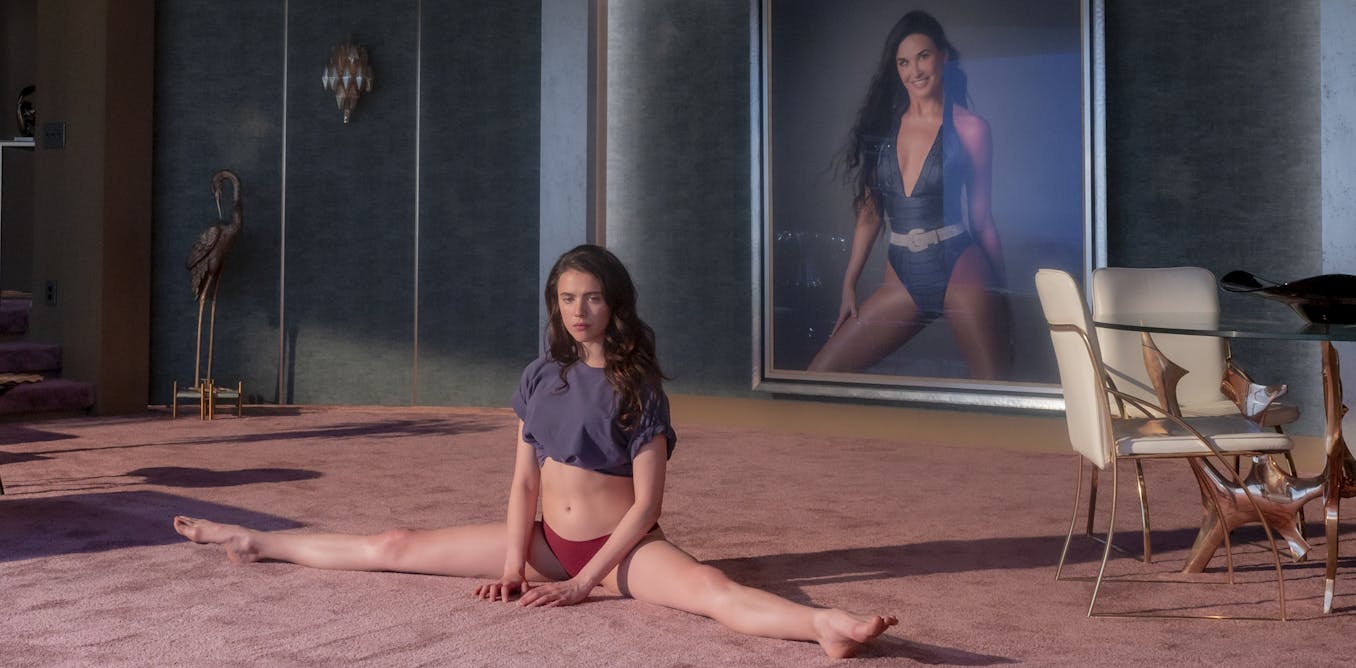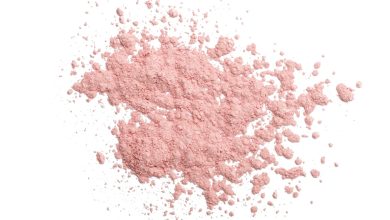We’re in a golden age for body horror films – as Demi Moore’s The Substance proves

مجلة المذنب نت متابعات عالمية:
In the 1980s, film scholar Barbara Creed coined the term the “monstrous-feminine”. It refers to the way that female monsters are typically portrayed as threatening and disgusting for reasons connected to their bodies and their sexuality. New film The Substance takes a leaf out of Creed’s book by proposing a feminist critique of female experience through the visceral language of the body horror, a sub-genre preoccupied with the transformation, destruction or grotesque exaggeration of the human body.
The Substance is a film about a fading Hollywood star who will go to any lengths to stay beautiful. After having her TV aerobics show cancelled, Elisabeth Sparkle (Demi Moore) resorts to a mysterious serum that can create a “better” version of her – a younger double she can inhabit a few days at a time.
As the pull of success and the return of public recognition lure Sparkle away from her older, now abandoned self, horrendous mutations ensue. It seems poignant that the protagonist of this dark parable should be played by Moore, an actor whose looks have long been scrutinised.
In the October issue of Sight and Sound, the film’s director, Coralie Fargeat, explains that it’s not intended as a caricature, but “a mirror of society’s misogynistic mentality”. It really is “that gross … that violent in the real world,” she argues.
Many agree with her. In a review for Film International, film critic Alexandra Heller-Nicholas goes as far as to call The Substance a “documentary”, due to its “emotional fidelity”. That is, its ability to make literal the disconnection between body and consciousness caused by ageing, which impacts women particularly negatively.
A growing body of films
The Substance is not the only major film in 2024 to be marketed, either fully or in part, as “body horror”. This is surprising because body horror originally emerged as a niche, often independently produced, sub-genre.
Body horror’s gruesome aesthetic and themes of corporeal decay, transformation and mutilation can be off-putting for many viewers. Yet films like Love Lies Bleeding, Tiger Stripes and I Saw the TV Glow (which all had wide releases in 2024) have turned to the sub-genre. Their directors have been drawn to its ability to tell timely stories about the way corporeality, identity and social interactions cannot be separated.
These films are largely about marginalised or maladjusted people. They show how our personal actions and sense of identity are always affected by the availability of role models and the limitations imposed on people by governmental, educational, religious and familial forces. For example, the teenage protagonist in Tiger Stripes rebels against the expectations that, because she is a girl, she should cover her hair, show modesty and be courteous.
From Poor Things and Infinity Pool (both 2023) to Hatching (2022) and Titane (2021), the 2020s are shaping up into something of a new golden age for body horror.
Novelist A.K. Blakemore has written of the rise of “femcore” – a literary trend of “ultraviolent body-horror”. Eliza Clark’s Boy Parts (2020), Alison Rumfitt’s Brainwyrms (2023), Monika Kim’s The Eyes Are the Best Part (2024) and the anthology Of the Flesh (2024) are included under this label.
And there’s a similar trend emerging in streaming shows, from the episode The Outside from Guillermo del Toro’s Cabinet of Curiosities (2022) to Alice Birch’s remake of David Cronenberg’s Dead Ringers (2023).
Courtesy of Mubi
A sub-genre with substance
One of the key things that characterises this contemporary wave of body horror is the influx of directors who identify as women and as queer.
There were far fewer women and queer directors in the late 1970s and 1980s, when body horror gained popularity thanks to films like The Evil Dead (1981), The Fly (1986) and Hellraiser (1987), than there are now. This decade has made big moves towards inclusion, and the film industry has been greatly impacted by social movements like Me Too, Trans Lives Matter and Black Lives Matter, even if much work is yet to be done.
Body horror is particularly appealing to creators who would have previously found it difficult to make a living in the world of commercial filmmaking. Filmmakers (including Rose Glass, Amanda Nell Eu, Jane Schoenbrun, Hanna Bergholm, Julia Ducournau, Michelle Garza Cervera, Natalie Erika James, Alice Maio Mackay, Nia DaCosta and Coralie Fargeat) have found a valuable lexicon for feminist, trans-activist and anti-racist messages in the sub-genre. Many of them talk about their work as highly personal – if not based on their direct experience.
The body horror sub-genre is attuned to the violence of social exclusion and discrimination. Its metamorphic, painful, insidious and carnal nightmares help articulate the concerns of a new generation of artists for whom corporeality, and sometimes simply being visible, has become a political statement.
David Cronenberg closed his classic body horror film Videodrome (1983) with the emblematic line: “Long live the new flesh!” He needn’t have worried. It’s here to stay.

Looking for something good? Cut through the noise with a carefully curated selection of the latest releases, live events and exhibitions, straight to your inbox every fortnight, on Fridays. Sign up here.
نشكركم على قراءة المنشور عبر مجلة المذنب نت, المتخصصة في التداول والعملات الرقمية والمشفرة















